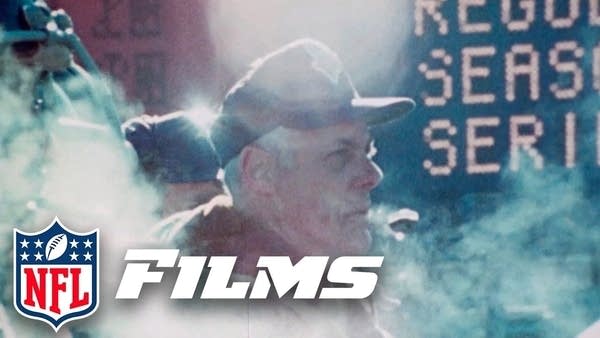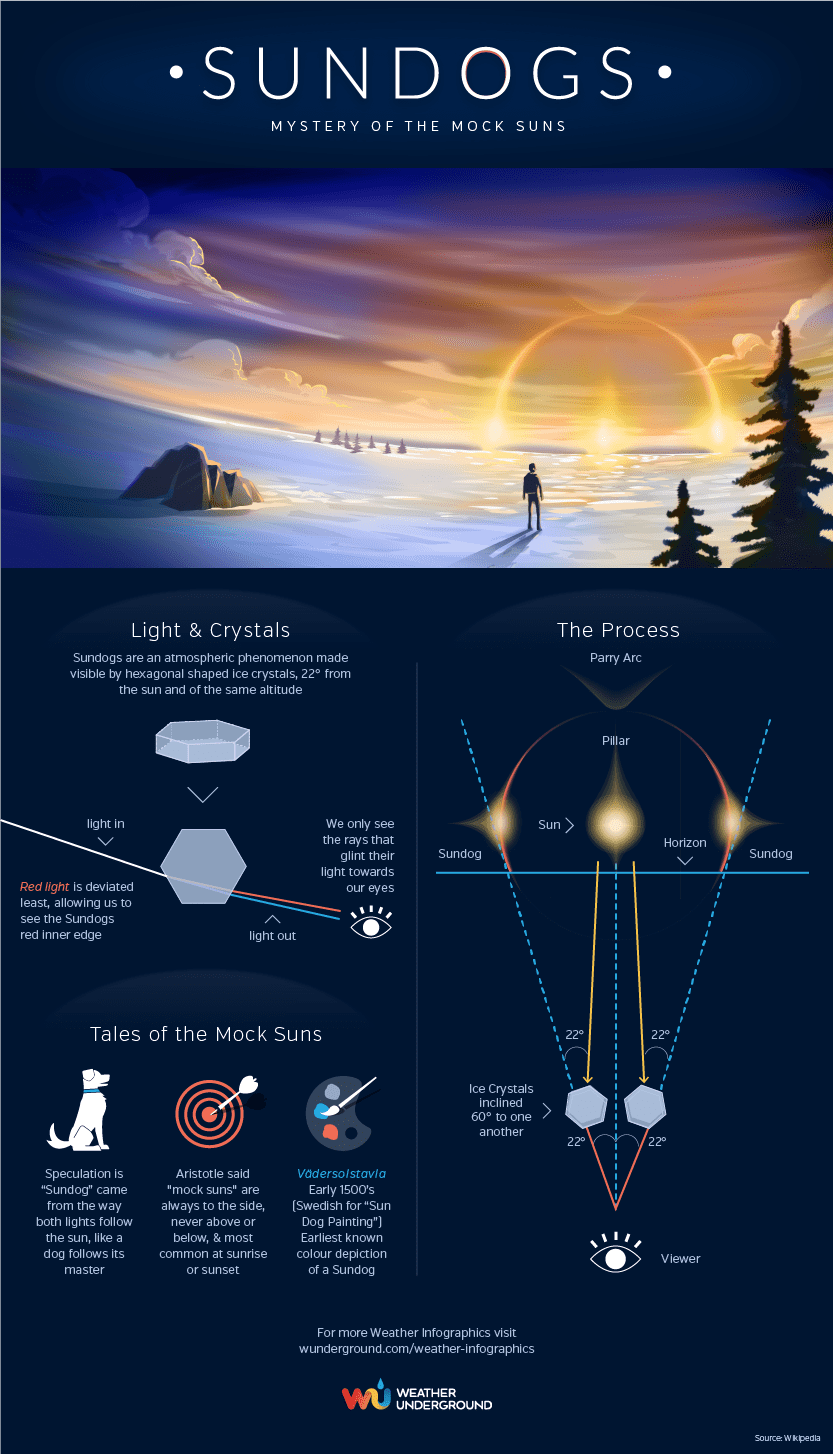Arctic magic: Sun dogs and fairy dust; Friday snow
Minnesota's frigid air masses are legendary.
Our reputation for winter toughness emanates far beyond the Land of 10,000 Lakes. Ice Palaces at the Winter Carnival. Instant ice fishing villages on frozen lakes. Bud Grant's icy breath on the frozen tundra at Vikings games.

One bonus of our icy Arctic air masses? Sunlight and ice crystals play magic optical tricks in the sky over Minnesota. It happened Monday morning. Many of us were treated to an amazing show of sun dogs around Minnesota.
The science of sun dogs
Create a More Connected Minnesota
MPR News is your trusted resource for the news you need. With your support, MPR News brings accessible, courageous journalism and authentic conversation to everyone - free of paywalls and barriers. Your gift makes a difference.
Sun dogs are common in the Arctic climates in winter. Ice crystals refract sunlight at different angles, often producing what's known as a 22-degree halo.

Here's a good description of the physics behind sun dogs.
A sun dog or sundog (scientific name parhelion, plural parhelia, e.g. "with the sun") is a relatively common halo, an atmospheric optical phenomenon mostly associated with the refraction of sunlight by small ice crystals making up cirrus or cirrostratus clouds. Another term used is sunbow (an arch resembling a rainbow made by the sun shining through vapor or mist).
Sundogs typically, but not exclusively, appear when the sun is low, e.g. at sunrise and sunset, and the atmosphere is filled with ice crystals forming cirrus clouds, but diamond dust and ice fog can also produce them. They are often bright white patches of light looking much like the sun or a comet and are occasionally confused with those phenomena. Sometimes they exhibit a spectrum of colors, ranging from red closest to the sun to a pale bluish tail stretching away from the sun.
The ice crystals causing atmospheric phenomenon are shaped as hexagonal prisms (ice Ih, e.g. with a hexagonal top and bottom and six rectangular sides). Some of these crystals are elongated, some flat; the latter causing crisp and bright sundogs if evenly oriented with their hexagonal ends aligned horizontally, while the former produces other atmospheric phenomenon, such as parhelic circle, 22° halo, circumzenithal arc, upper tangent arc, and lower tangent arc. A mixture of various crystals with different alignments produces several of these phenomenon at the same time.
When the sun is low, the two sundogs are located on the circle of the 22° halo. As the sun rises, the sundogs slowly move along the parhelic circle away from the sun to finally vanish as the sun reaches 61° over the horizon (e.g. the sundogs move from the 22° halo to the circumscribed halo.)
First sub-zero temp in metro Monday
We bottomed out at -3 degrees at MSP Monday morning. That's pretty close to average for the first sub-zero temp of winter in the Twin Cities, which is December 8th.
Friday snow
Expect plenty of Arctic sunshine this week as temps continue to hover a few degrees either side of zero. The next significant snow system pushes in Friday and Saturday. Low pressure tracking toward Chicago spreads the snow shield over Minnesota, Iowa and Wisconsin Friday and Saturday.

Here's a still too early look at potential snowfall Friday and Saturday. Specifics will probably change, but the odds of another plowable snow for the Twin Cities and points south and east are growing.

Stay tuned, stay warm, and keep the shovel handy.